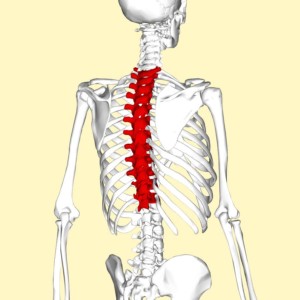Thoracic Disc Access – Discography
Background:
Thoracic disc access is performed for primarily diagnostic and occasionally therapeutic purposes. When performed for diagnostic purposes, contrast dye is injected slowly into the disc to try and reproduce your exact (“concordant”) pain complaints. Often, thoracic disc access is obtained to determine which disc is the pain generator prior to surgical or interventional treatments. The number of discs to be injected will be determined by your physician, based on symptoms and imaging findings.
Precautions:
The procedure requires use of x-ray to precisely place the needle. Therefore, if you are pregnant, please inform your physician prior to the procedure. The amount of x-ray exposure is within recommended safe limits for adults, but can be hazardous to the developing fetus.
If you are on blood thinners or anticoagulants, please notify your physician. Special precautions or medication adjustments may be deemed necessary. However, do not stop your medication without consulting with your physician.
If you are a diabetic and take medications, notify your physician as medication adjustments may be necessary.
You will require a driver after the procedure, as it may be unsafe to operate a vehicle.
Notify your physician of any allergies you may have.
Before the procedure:
Take your medications as prescribed unless told otherwise. You may be given a sedative medication prior to the procedure. Additionally, you may be given antibiotics intravenously as well as directly into the disc.
During the procedure:
You will be placed face down onto a special table for the procedure. After cleansing the skin, a drape will be applied. The medications will be placed in syringes, ensuring sterility. The x-ray machine will be maneuvered to a satisfactory position. A needle will be placed precisely into the disc or discs selected, utilizing multiple views for safety. After satisfactory placement of the needle, you will be asked to participate throughout the rest of the procedure if performed for diagnostic purposes. Your baseline pain will be assessed prior to injection of contrast dye. The contrast dye will be slowly injected with x-rays taken throughout the procedure. It is important tell the doctor if your pain changes during the injection of the contrast dye. Additionally, you will rate your pain and describe the location and quality of the pain. It is important to notify the doctor if it is your exact (concordant) or different (non-concordant) pain. This will be repeated for each disc tested.
After the procedure:
Your skin will be cleansed and a bandage applied as necessary. You will be taken to an observation area and monitored for any adverse reactions, which are very rare. Your usual pain will be re-assessed and documented. You may be given additional medications for pain following the procedure.
Side effects or complications:
Side effects are generally minimal and can include increased discomfort, local bruising, headache, nausea, fainting or dizziness. These symptoms are usually short-lived and will resolve themselves. More severe complications are rare such as infection, allergic reaction, nerve injury, lung injury or spinal cord injury.
If you have any questions or concerns, please contact us at (610) 954-9400.


